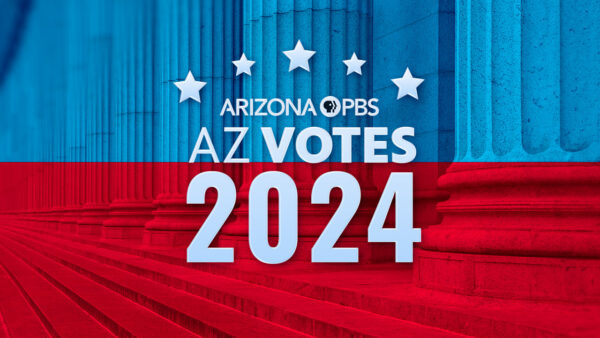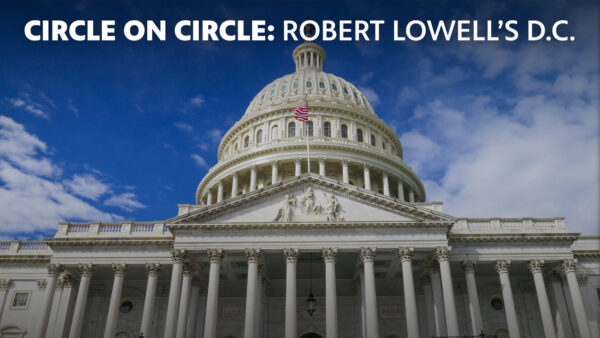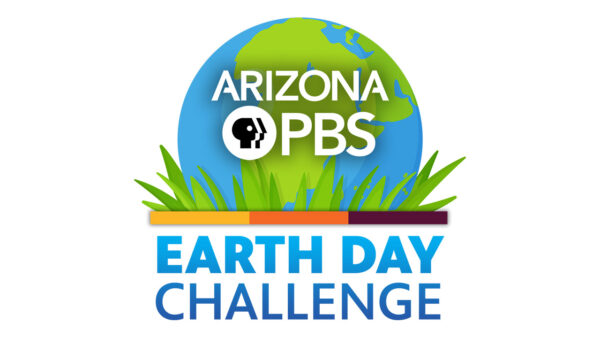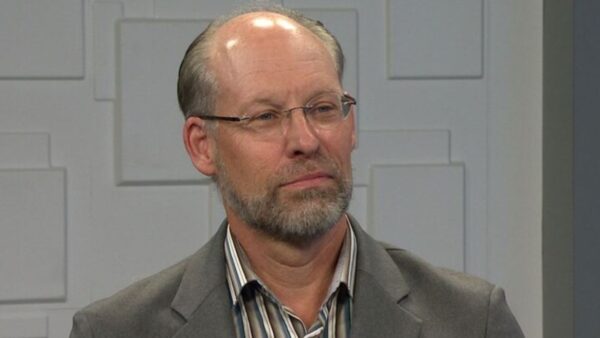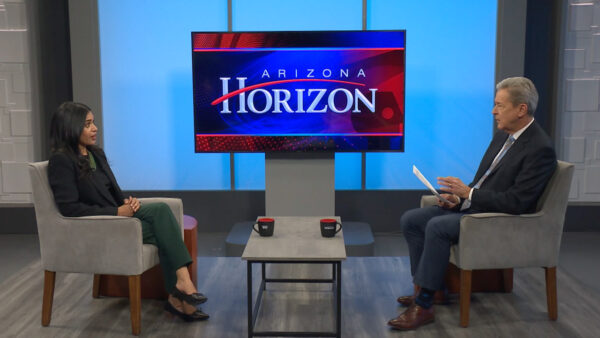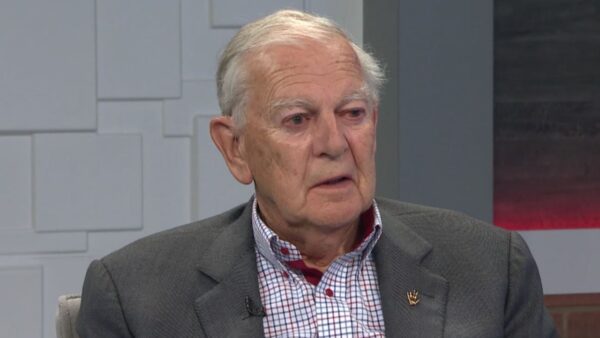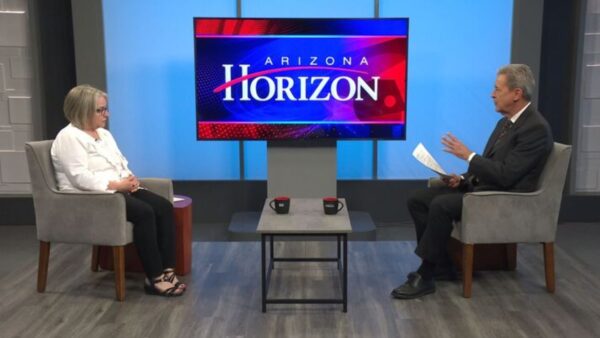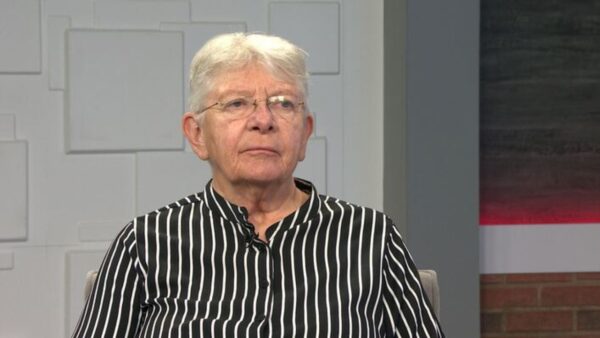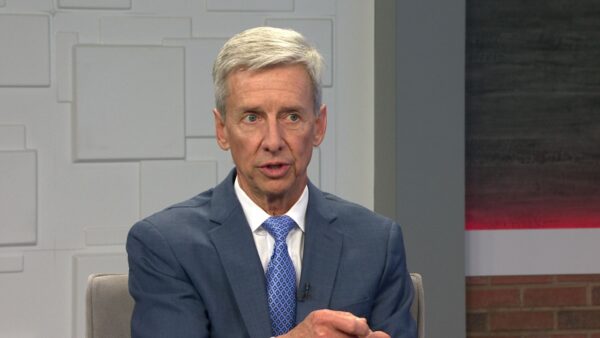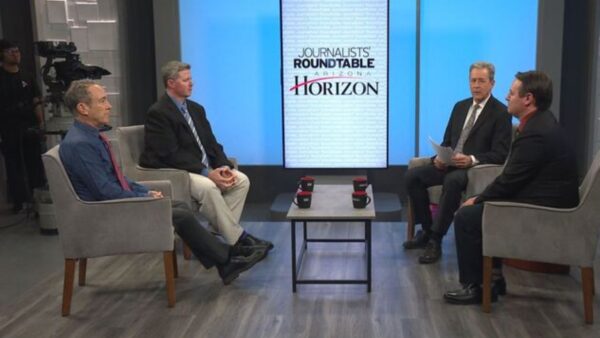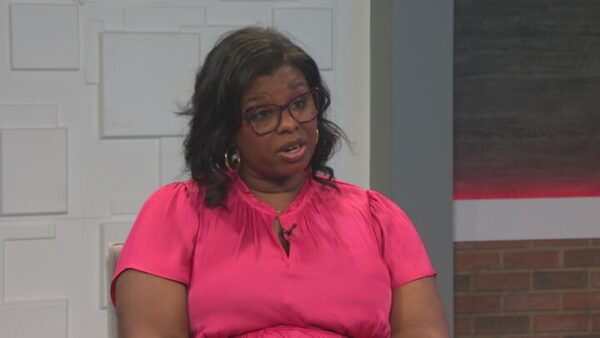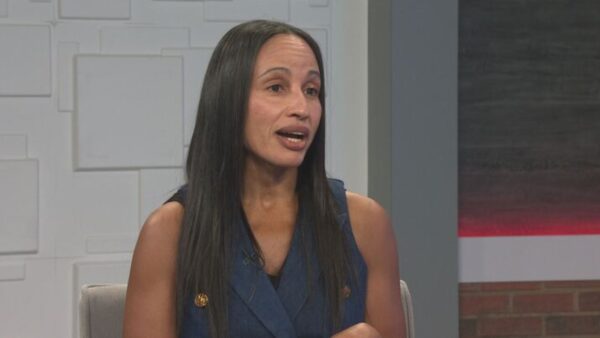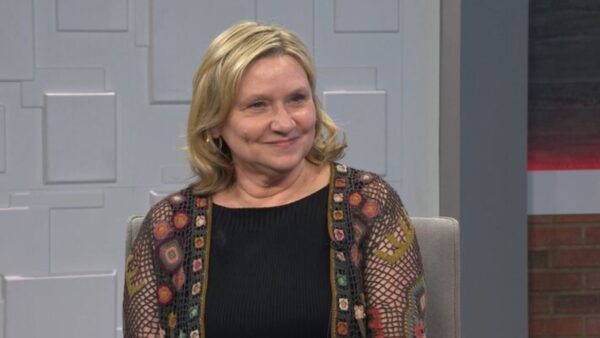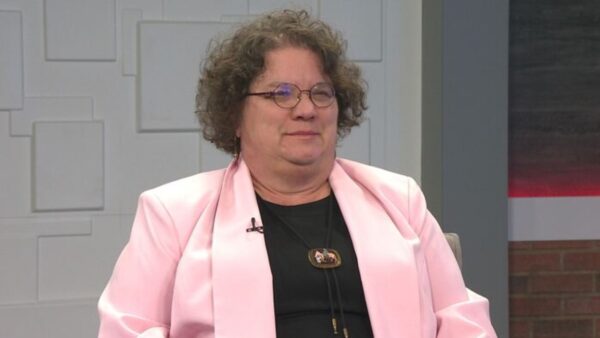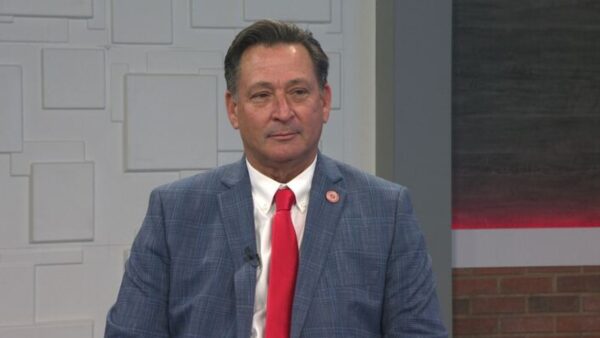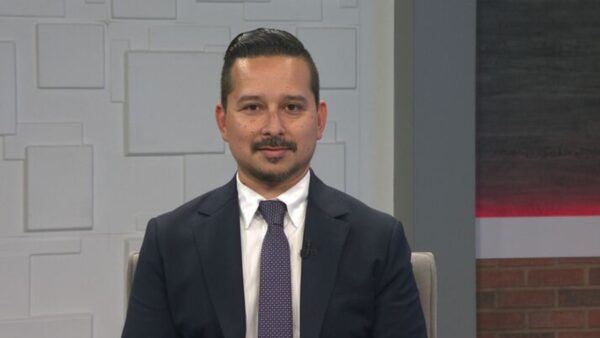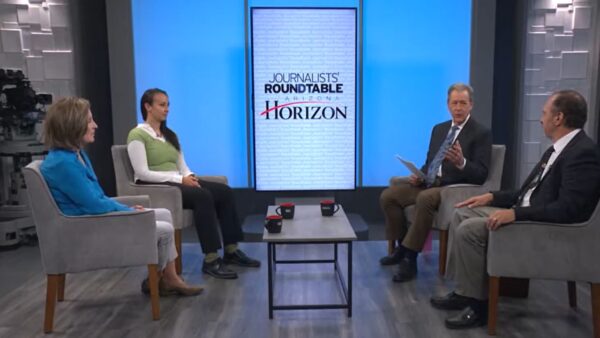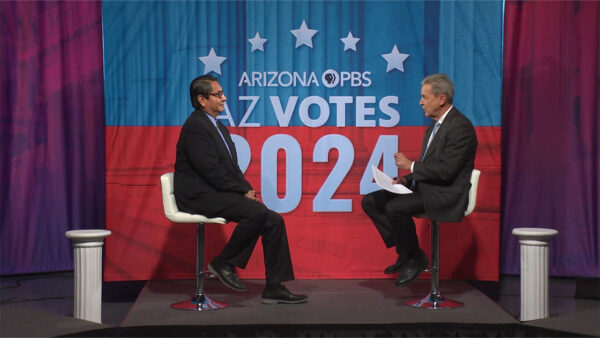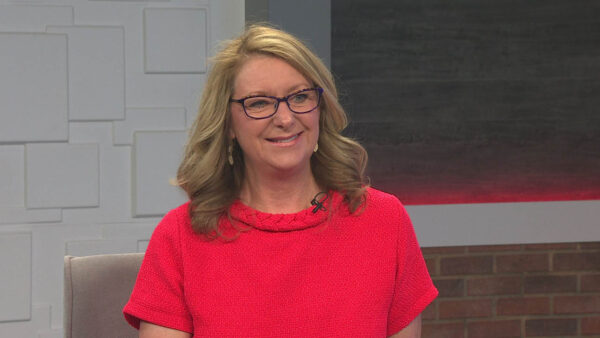Millions of people worldwide practiced how to “Drop, Cover, and Hold On” during an earthquake at 10:17 a.m. on October 17* during Great ShakeOut Earthquake Drills! Although Arizona is not known for devastating earthquakes, the event was held here as well. Michael Conway, Chief of the Geologic Extension Service from the Arizona Geological Survey, will talk about the event and Arizona earthquakes.
Ted Simons: Millions worldwide practiced how to drop, cover, and hold on during an earthquake preparedness drill today. Arizonans took part in the event, too, even though the state isn't known for devastating quakes. We're joined now by Michael Conway, chief of the Geologic Extension Service from the Arizona Geological Survey. Good to have you here.
Michael Conway: Ted, thanks for having me on.
Ted Simons: What exactly happened on 10/17 at 10:17 this morning?
Michael Conway: Well, across the western United States, there were a number of states that participated in this. A number of people in the neighborhood of millions and in the state of Arizona, 116,000 people dropped to the ground, found cover, and held on to that cover to simulate what would happen in the event of ground shaking.
Ted Simons: And, again, 10/17 because of…
Michael Conway: It is coming up every Thursday in mid-October. The rationale behind the 10:17 a.m. time, this is really targeting school-aged kids. Working a lot with the K-12 community.
Ted Simons: I thought it was because of the San Francisco Earthquake on October 17 --
Michael Conway: Last year, it was 10/18.
Ted Simons: I would have been really confused about that. So school kids, universities, who else was involved?
Michael Conway: There were businesses involved, health care folks. The hospital in Yuma was involved. A number of people. This is only our second year. We were at 60,000 last year. 116,000 this year. We will continue to grow this and make it a statewide event.
Ted Simons: It is designed to do what?
Michael Conway: It is designed to teach people what to do in the event of an earthquake. All too frequently, if the ground starts shaking, first, immediate response is for people to get up and run away, out of the building. That is not what you should do. If the ground starts shaking, indoors, drop, find cover, and hold on to that cover.
Ted Simons: If you realize what's going on.
Michael Conway: That's exactly right.
Ted Simons: A lot of times Earthquakes start. By the time you realize what is going on, it is well through the process. Let's talk about Arizona. We don't do many topics on earthquakes on this show; we don't get a heck of a lot of them. We are maybe in "small E" earthquake country.
Michael Conway: We get about 100 earthquakes a year. Most in northern Arizona, and most are small. We have a number of faults in the state. There is a potential for moderate to large earthquakes. We could see those. They are not going to happen with any great frequency, but it doesn't have to happen frequently.
Ted Simons: This is, I believe, fault lines we are seeing?
Michael Conway: These are the fault lines. These are faults that we have identified as active faults in the state of Arizona. You will see the majority of them in the northern Arizona area, it's called the Northern Arizona Seismic Zone. That's where most of our faults are. Keep in mind of course that Yuma is 40, 50 miles from the San Andreas fault. Faults have no respect for political boundaries whatsoever.
Ted Simons: We've also learned that a fault, many, many miles away can do a certain amount of damage.
Michael Conway: You bet.
Ted Simons: A long way away, if those --
Michael Conway: That's right. Seismic waves generate outward and three dimensions from that particular, from the epicenter. They move outward at a very rapid pace. So that an event that occurs at the San Andreas Fault would be felt in Yuma in just a handful of seconds.
Ted Simons: Now as far as fissures are concerned, there is a map of fissures as well. Difference between a fault line and a fissure.
Michael Conway: Fault line is really an area in which the rock is weakened and there is movement along the rock on either side of that particular fault. A fissure is just a crack in the ground. Fissures that we see, and we see them in four counties, Maricopa, Pinal, Pima and Cochise County -- those are result of subsidence from groundwater harvesting. They are just long, open fractures.
Ted Simons: And that is not necessarily an earthquake concern.
Michael Conway: No, it is not whatsoever.
Ted Simons: Our next map I think we can show the epicenters in the state. When you talk northern Arizona, close to California, hello. Look at all of that.
Michael Conway: You bet. You bet. In our catalog, I think we've got several thousand earthquakes, historical earthquakes from about 1852 to 2013, and you can see all of that activity to the west of us along the San Andreas and Imperial fault over there in California. Lots of earthquakes occur. Most of the earthquakes in Arizona will be small, will go unfelt. But we have the potential to have larger felt earthquakes.
Ted Simons: Within the state boundaries, what is the biggest quake we have ever had?
Michael Conway: Within the state boundaries, actually the biggest quake that has impacted us was the 1887 event, just south of Douglas, in Sonora, Mexico. That was a magnitude 7.5. That did damage in the Tucson area and throughout the southwest and it was felt all throughout Arizona territory at that time.
Ted Simons: We think of Arizona and look over to California. You have Mexico, New Mexico as well. Are those -- Mexico is, what about New Mexico?
Michael Conway: Baja, California, certainly. Utah, Nevada, probably more likely to impact us in northern Arizona, with earthquakes and faults.
Ted Simons: Are there misconceptions regarding Earthquakes in general and in Arizona in particular?
Michael Conway: You know, I think the biggest misconception is that people don't recognize that we have earthquakes. One of the questions we get whenever there is an earthquake, we get calls at our office asking, does Arizona have earthquakes? And since when has Arizona had earthquakes? And our response is we have lots and lots of earthquakes. Most are unfelt. You will feel earthquakes once in a while.
Ted Simons: I worked for a time in the bay area and I was up there for the October 17 quake in the upper deck of Candlestick Park, had a short conversation with God toward the end there. Every once in a while, you walk along and the furniture shakes. Anyone who lives in California knows this. Things shakes, things move, and everyone moves on their merry way. Are we too comfortable right now with earthquakes in America?
Michael Conway: You know, I think we are. And some of that came to a stop of course because of the earthquake a year, year and a half ago now in the D.C., in the Virginia area. That impacted people up and down the east coast. The east coast is -- the rock there is very hard and solid. It transmits seismic energy very effectively and people, millions of people felt that. Probably the first time many of them had ever felt an earthquake. And it certainly changed the attitude towards earthquakes in that area.
Ted Simons: But as far as Arizona it concerned, northern Arizona, by California, especially, maybe down the south to New Mexico, but the Phoenix area looked from the epicenter map looked pretty clean.
Michael Conway: You don't have a lot of earthquakes in the Phoenix area and you are far enough from the San Andreas, Baja, California, from the big faults in Northern Arizona that you probably are not going to have a lot of earthquake risk here. The fault -- the map we just showed you shows the earthquake, the faults that we're aware of. There are other faults that we're probably not aware of. They don't rupture frequently. They are very sparsely distributed. But there are going to be faults that we're not aware of that are going to rupture in the future.
Ted Simons: And they will say hello in a big way.
Michael Conway: They are.
Ted Simons: As long as we know how to drop, cover, and hold on, which is what today's event was all about, we should be in relatively good shape.
Michael Conway: We had 81,000 kids participated today that know a little bit more what to do in the event of ground shaking now.
Ted Simons: Well that's fantastic. Good to have you here. Thanks for joining us.
Michael Conway: Great to be here. Thank you.
Michael Conway:Chief of the Geologic Extension Service, Arizona Geological Survey;
